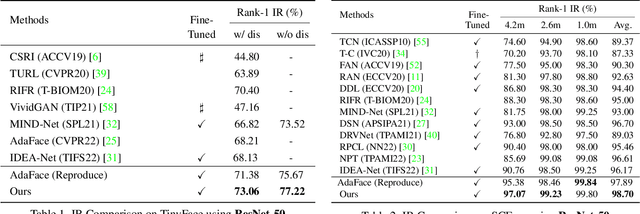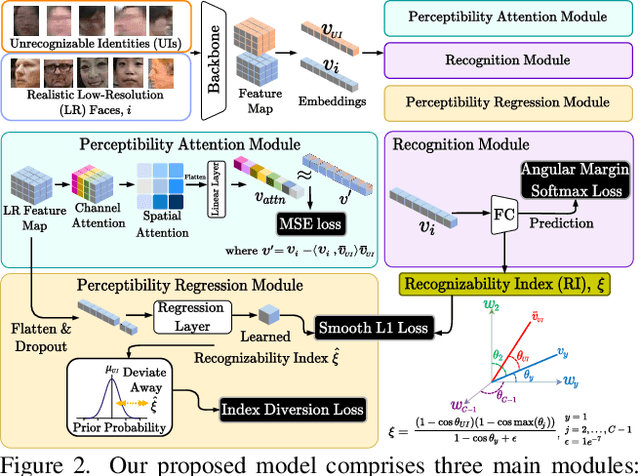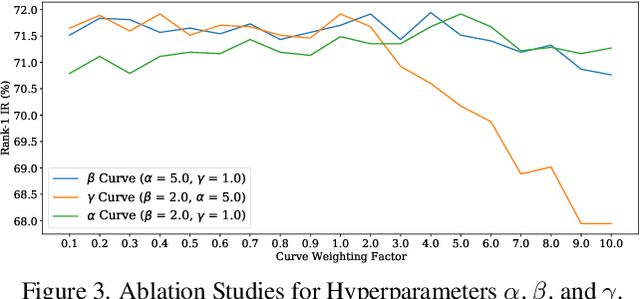Recognizability Embedding Enhancement for Very Low-Resolution Face Recognition and Quality Estimation
Paper and Code
Apr 20, 2023



Very low-resolution face recognition (VLRFR) poses unique challenges, such as tiny regions of interest and poor resolution due to extreme standoff distance or wide viewing angle of the acquisition devices. In this paper, we study principled approaches to elevate the recognizability of a face in the embedding space instead of the visual quality. We first formulate a robust learning-based face recognizability measure, namely recognizability index (RI), based on two criteria: (i) proximity of each face embedding against the unrecognizable faces cluster center and (ii) closeness of each face embedding against its positive and negative class prototypes. We then devise an index diversion loss to push the hard-to-recognize face embedding with low RI away from unrecognizable faces cluster to boost the RI, which reflects better recognizability. Additionally, a perceptibility attention mechanism is introduced to attend to the most recognizable face regions, which offers better explanatory and discriminative traits for embedding learning. Our proposed model is trained end-to-end and simultaneously serves recognizability-aware embedding learning and face quality estimation. To address VLRFR, our extensive evaluations on three challenging low-resolution datasets and face quality assessment demonstrate the superiority of the proposed model over the state-of-the-art methods.
 Add to Chrome
Add to Chrome Add to Firefox
Add to Firefox Add to Edge
Add to Edge